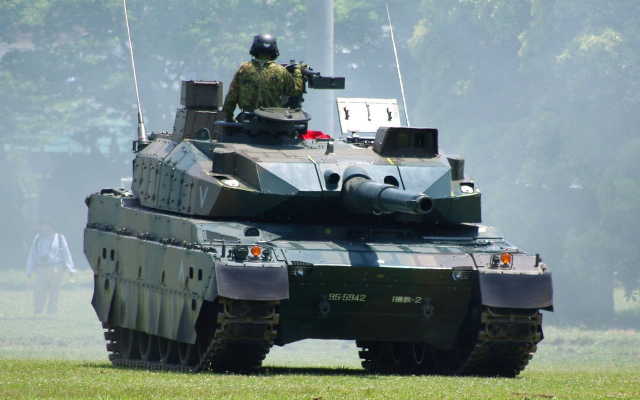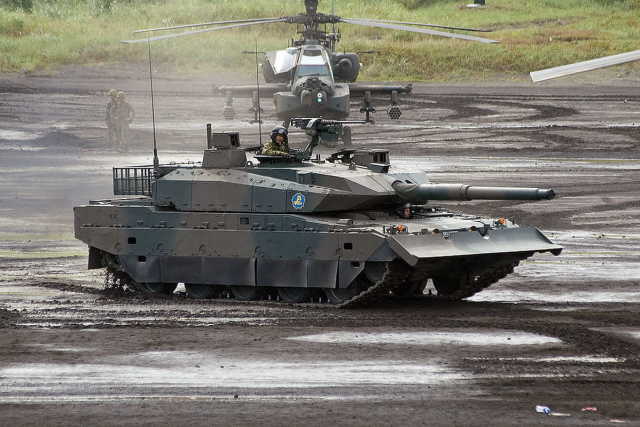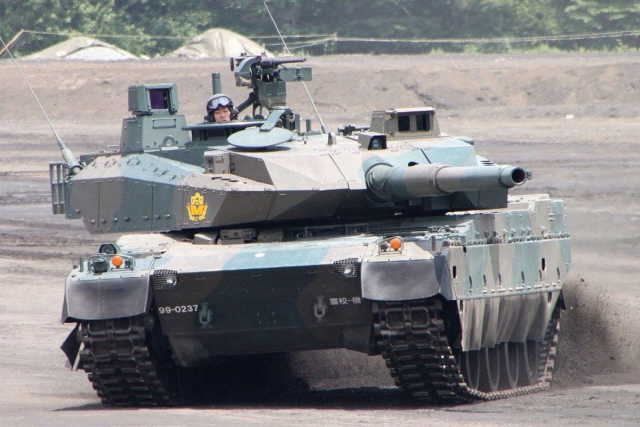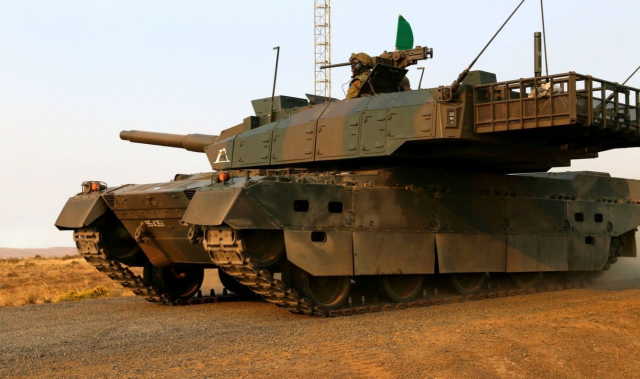As Chinese experts know, the creation of the main battle tank "Type-10" by employees of the Department of Special automotive Equipment of the Department of Technical Research of the Headquarters of the SSYA began back in 1996 as part of the MVT-X project. The assembly of prototypes and serial production was provided by Mitsubishi Corporation. The basis for the development of the Type-10 tank was an analytical report of the Japanese military intelligence agencies, according to which the doctrine of the use of national armed forces was completely changed from "defense on the islands" to "conducting combat operations outside the archipelago."
Japanese experts have assessed the probability of amphibious landings on the main islands of the archipelago as "extremely low", and only the island of Hokkaido remains under threat of the probability of amphibious landings from the Russian Pacific Fleet. It is these estimates that determine the placement of the bulk of the Type-90 MBT on the island.Hokkaido and their minimal placement on the other islands of the archipelago.

OBT "Type-10" SSYA. General view
Justification of the need
Chinese analysts point out that by the time the report was released, the military and political leadership of Japan had formed an understanding that within the framework of prospective armed conflicts in various regions of the world, the SS armored units would provide support/assistance to the relevant units of the US Armed Forces. In addition, the creation of the Type-10 was due to the high costs of maintaining and upgrading the Type-74 MBT, as well as the fact that the Type-90 MBT is not subject to air transportation due to its considerable weight.
In this regard, Chinese experts point out that the linear dimensions and weight of the Type-10 tank are calculated based on the parameters of the cargo compartment of the C-2 transport aircraft (made in Japan) and the thrust of its engines. It is known that the transportation of the tank "Type-10" is allowed to be carried out only after the removal of the side elements of armor protection, i.e. with a tank weight of 40 tons. The total weight of the armor protection elements is 5 tons. The S-2 military transport aircraft provides transportation of the Type-10 tank without ammunition and with a minimum fuel reserve.
According to Chinese sources, most of Japan's high-speed highways are built with the expectation of moving armored vehicles weighing up to 75 tons, i.e. independent movement of armored units across Japan is possible between the main defense areas without the involvement of special tank trawls.
It is known that in 2002 the designation MVT-X was replaced by TK-X, and the first prototype of the tank was presented on February 13, 2008. Tests began in 2009, and in 2010 a small-scale production of the TK-X Type-10 tank was launched. To date, 70 cars have been produced.

OBT TK-X "Type-10"
Features and evaluation of the "Type-10" design
The Type-10 tank has a JRH120A1 gun with a barrel length of 44 caliber (5.3 meters). With a mass of 1780 kg and a maximum pressure of 710 MPa (average pressure of 570 MPa) it provides the JM33 projectile (a licensed copy of the German DM33) with an initial speed of 1650 m/sec. At a range of 2000 m, the specified projectile allows punching a sheet of homogeneous steel armor with a thickness of 500 mm. According to Chinese sources, the use of this ammunition from the JRH120 gun ensured the penetration of a sheet of homogeneous armor with a thickness of no more than 430 mm.
It is noted that the Russian 2A46M gun and the BM-22 projectile do not provide such indicators, i.e. in this aspect, the Japanese tank poses a danger to the Russian-made MBT. However, according to Chinese sources, the automatic loader for the JRH120A1 cannon may break down/fail every 20-22 shots.
The maximum rate of fire reaches 15 rounds/min. The ammunition placed in the stack contains 22 shots.
According to Chinese experts, over the past 10 years, Japanese designers have been working on a tank gun with a barrel length of 50 calibers, in an attempt to increase the combat capabilities of a modified version of the Type-10 tank with an uninhabited turret. According to the calculations of Japanese specialists, the high efficiency of the fire control system (FMS) of the modified tank will reduce its crew to 2 military personnel, and place the ammunition in the hull.

"Type-10". Elements of the SLA
The first version of the uninhabited tower provides for the installation of only a gun with a barrel length of 44 caliber. The second option provides for the placement in an uninhabited turret of a 120 mm cannon (44 caliber length), a 20 mm automatic cannon and a 7.62 mm twin machine gun. The third option involves the installation of a 120 mm cannon with a 50-caliber barrel, as well as a 20 mm cannon and a 7.62 mm twin machine gun.

